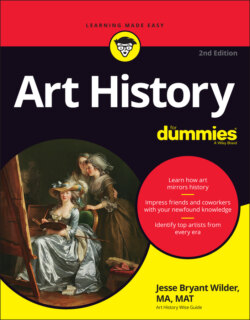Читать книгу Art History For Dummies - Jesse Bryant Wilder - Страница 116
Raiding King Tut’s tomb treasures
ОглавлениеAkhenaten’s monotheistic experiment (only one god — Aten!) didn’t survive him. When his 9-year-old son, pharaoh Tutankhaten (which means “living image of Aten”), came to the throne, his vizier (chief minister) Ay, an old-school Amun priest, forced the boy to change his name to Tutankhamun, which means “living image of Amun.”
With this name change, the old religion was now back on track. Tutankhamun moved the capital back to Thebes and ordered many of Akhenaten’s outdoor temples and other innovations to be destroyed. Tutankhamun’s own death mask, made only nine years later (see Figure 6-5), shows that most of the old formality and rigidity made a comeback after Akhenaten’s death.
Tutankhamun is the only pharaoh with a nickname. He has been known as King Tut ever since Howard Carter discovered his intact tomb in 1922. Tut’s was the only king’s tomb that hadn’t been ransacked by grave robbers. It revealed the full cornucopia of Egyptian wealth and splendor and included a golden throne, four golden chariots, precious jewels, a casket of pure gold, statues of gold and ebony, and on and on. You can see why grave robbing was big business in Ancient Egypt!
Vladimir Wrangel / Shutterstock
FIGURE 6-4: Queen Nefertiti’s bust denotes both the real and the ideal.
Boltin Picture Library / Bridgeman Images
FIGURE 6-5: The funerary mask of Tutankhamun is made of gold inlaid with semiprecious stones and glass.
